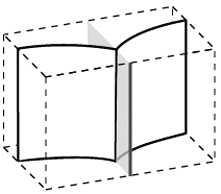

| Previous | Return to Steve Lehar | Next |
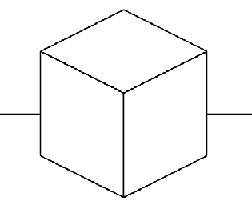
The effect of a visual edge in a line drawing stimulus is to produce either a crease or fold in the perceived surface, or to produce an occlusion percept as of a nearer surface occluding a farther surface in the background. This property can be added to the model by proposing that a visual edge propagates a different kind of field of influence into the depth dimension of the perceptual representation, as suggested by the gray shading below.
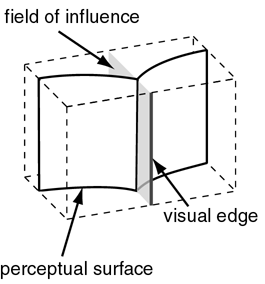
The effect of this field of influence is to tend to make opaque state elements within that field to switch from the coplanarity state to an orthogonality state, representing the perception of an orthogonal corner parallel to the stimulus edge, as suggested above. This is achieved by by changing the pattern of the local interaction fields projected by those elements as suggested below.
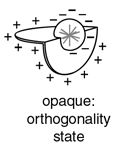
Alternatively, the same edge could be perceived as a concave corner, therefore the system should be bi-stable between these two states.

|

|
To account for the occlusion percept, the visual edge should also promote an occlusion state, propagating the surface percept outward in one direction from the stimulus edge. This local perceptual response would also appear aligned with the stimulus edge, resulting in an occlusion percept along the visual edge as suggested below left. Alternatively, the edge can be interpreted as the reversed occlusion, as suggested below right.
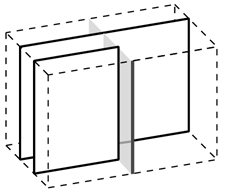
|
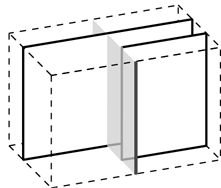
|
This occlusion percept is produced by changing the local interaction fields of elements within the field of influence of the edge, from a coplanarity state to an occlusion state as suggested below.
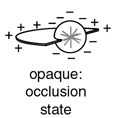
Since a stimulus edge gives no evidence locally whether it corresponds to a corner or occlusion edge, the system should be bi-stable between these alternative perceptual interpretations. In the presence of a local visual edge therefore the system should be multistable between the four states depicted below.

|

|

|

|
| Previous | Return to Steve Lehar | Next |